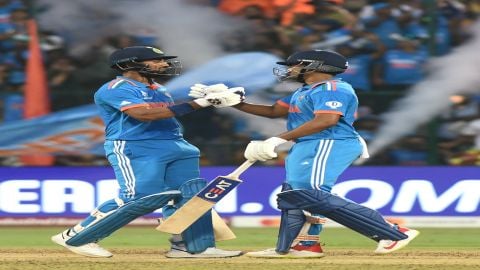
ODI World Cup: Two right-handed batters, two journeys on recovery from injuries and one role which they have been fulfilling to the T in the ongoing Men’s ODI World Cup – of being the fulcrum of India’s middle-order batting fortunes.
In these nine matches, fans must have realised how much value Shreyas Iyer and KL Rahul have added to the hosts’ unbeaten streak, adding more wings to India’s ten-year-old quest of clinching the trophy on home soil.
If Rohit Sharma, Shubman Gill and Virat Kohli have been the top-order run-getters, Iyer and Rahul are the steely men of this batting order who have shown that they are ready to step up if needed in any scenario. The presence of Iyer and Rahul in 2023 is complete opposite of what transpired during 2019 World Cup in England.

